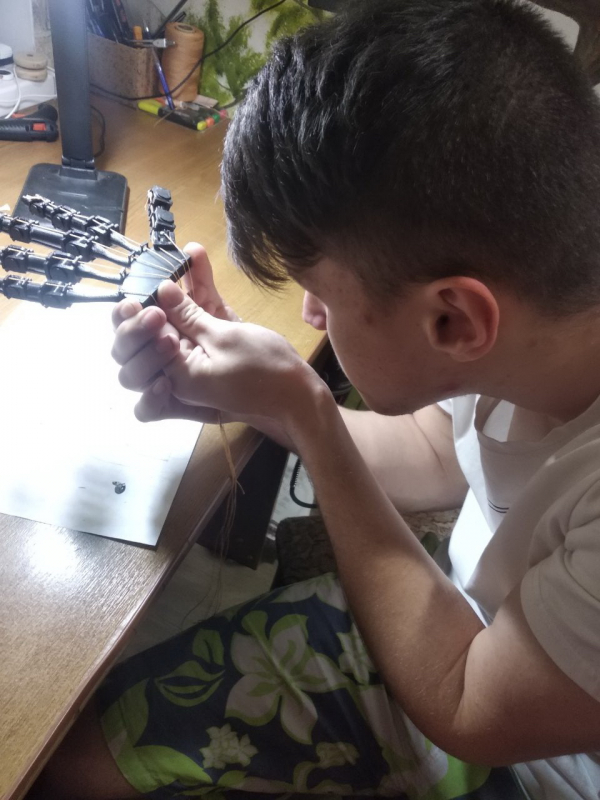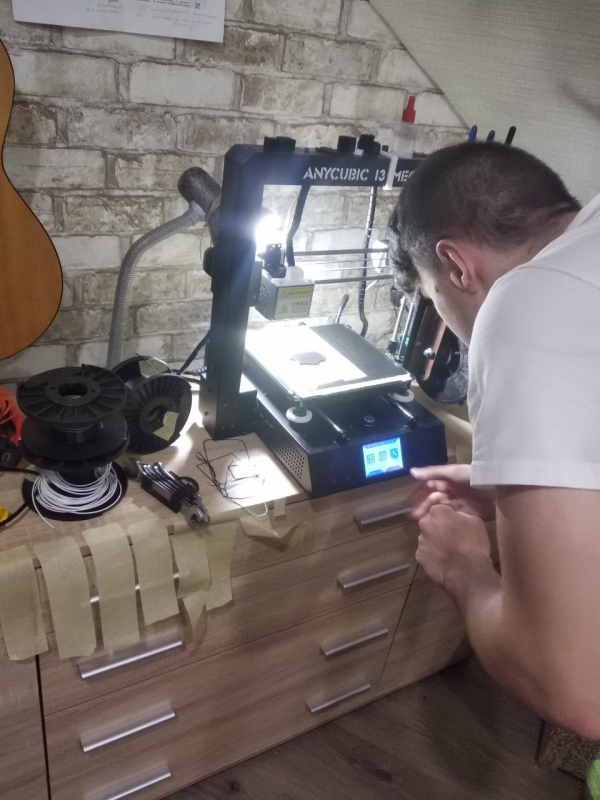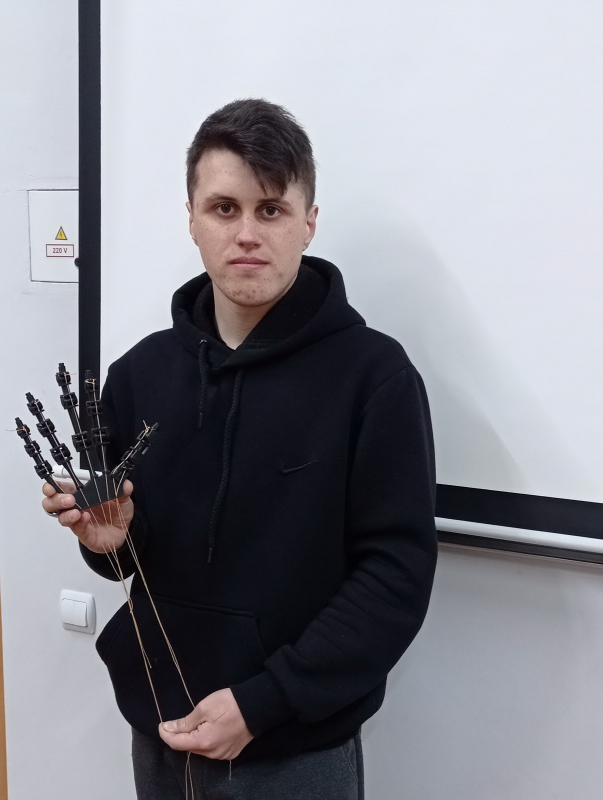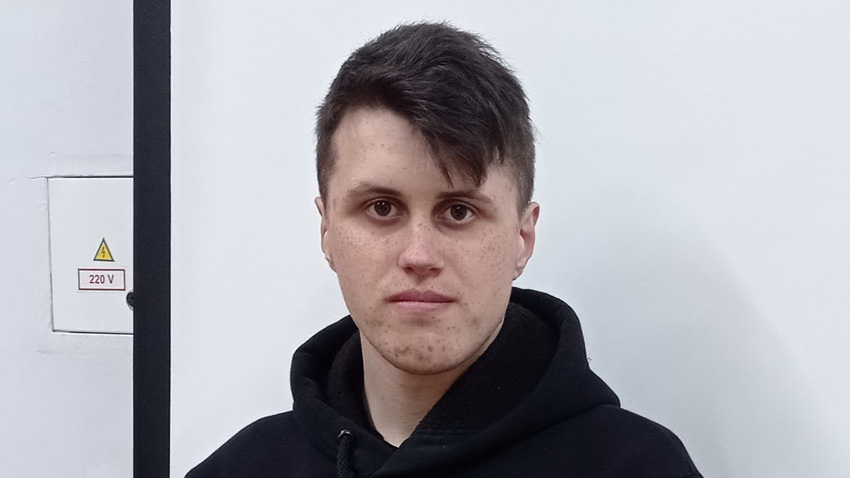Nazar Kuderskyi is studying under the new educational program «Technology of Orthopedic and Rehabilitative Products for Medical Purposes», Biomedical Engineering, the Department of Chemical Technology of Plastics Processing.
The idea to create this model arose spontaneously. The fact is that Nazar lives near a medical facility where many military personnel are undergoing treatment and rehabilitation.
Nazar Kuderskyi began to implement his idea with drawings and sketches. He made lots of drafts until he found the most successful one. During training, he learned a lot from the book «Atlas of Human Anatomy» by Frank H. Netter, which is used by medical students and future surgeons of all specialties. He studied the structure of the hand, how the bones, finger bends, and tendons are connected. In fact, with the help of this manual, he created a model based on the example of his own hand. For this, he used various materials, in particular rubber to reproduce the tendon, and the model itself was made of modified and light-resistant PETG plastic, which he received at the Department of Chemical Technology of Plastics Processing.
– When I worked on the fingers, it turned out that the big one was the most difficult to model, because it makes lots of different movements. In my development, it can wrap around the object and show the thumbs-up sign. Now I know how to improve its movements, says Nazar Kuderskyi.
The work also required knowledge of computer graphics. Nazar independently mastered free courses on various resources, as well as videos on YouTube. In this way, he learned several programs – for setting up the printer, for making artistic models, precise details and their placement, etc. A special 3D printer is needed to print all the elements of the prosthesis. The printer and the Atlas of Human Anatomy were bought by the parents, who support their son’s ideas in every possible way. The boy was consulted on certain issues at the Department of Descriptive Geometry and Engineering Graphics, and his teacher Petro Sokhan, Associate Professor at the Department of Mathematics, helped him make all the exact calculations.
The interlocutor assures that he plans to supplement his development with the models of pneumatic muscles, radial and rectus bones, as well as sensors and tabs, with the help of which the prosthesis will respond to nerve and muscle impulses.
– In what cases can such prosthesis be used? – I asked the developer.
– This prosthesis is transitional, adaptive, such that it will speed up getting used to the bionic one. It is designed for elementary actions: lift something light, up to two kilograms, take a cup, type text on the keyboard, make a call, etc. That is, it is a simple type of prosthesis. It can be made quickly, in three to three and a half months. You can print everything in just one day, then connect with a special glue, and after three days you can already use it. For a stronger prosthesis, let’s say, metal, ideally titanium, more costly and more expensive materials are needed, and the work, accordingly, will require much more time.
Nazar has lots of plans, including making shoulder prosthesis, and in the future he will develop prosthetic feet and legs.



